Written by Jules Klakosz, DevOps Engineer & Mathis Lorenzo, Software Engineer at TrackIt
Live video streaming workflows can vary widely depending on production environments, connectivity constraints, and latency requirements. At the encoding stage, AWS offers two primary approaches: AWS Elemental MediaLive, a fully cloud-based service, and AWS Elemental MediaLive Anywhere, a hybrid model that combines on-premises encoding with cloud-based control and monitoring. Understanding the differences between these options is essential for selecting the right architecture for specific broadcast and streaming needs.
Contents
MediaLive vs. MediaLive Anywhere
AWS Elemental MediaLive is a cloud-based live video processing service that enables broadcasters, content creators, and streaming platforms to encode, package, and deliver high-quality live video streams at scale. Its primary function is to transform incoming video feeds (from cameras, encoders, or other sources) into multiple output formats and bitrates suitable for distribution across different devices and networks.
AWS Elemental MediaLive Anywhere is a feature of AWS Elemental MediaLive that enables live video encoding to be performed on-premises while using the AWS Cloud for configuration, control, and monitoring. With MediaLive Anywhere, video is processed locally on dedicated appliances, typically provided by AWS Partners, allowing broadcasters to reduce video transport costs, lower latency, and maintain direct access to on-premises video sources such as SDI. This hybrid architecture is ideal for workflows where bandwidth is limited or where real-time processing is critical. While the encoding happens at the edge, all management tasks are handled in the cloud, ensuring centralized control and seamless integration with other AWS Media Services.
| Feature / Capability | AWS Elemental MediaLive | AWS Elemental MediaLive Anywhere |
| Encoding Location | Fully cloud-based | On-premises (via certified appliance) |
| Management & Control | Cloud (AWS Console or API) | Cloud (AWS Console or API) |
| Hardware Required | No | Yes (AWS Partner appliance or approved hardware) |
| Source Integration | IP sources (RTMP, RTP, HLS, MediaConnect, etc.) | Local sources (SDI) |
| Ideal Use Case | Cloud-native live streaming workflows | Hybrid workflows, remote production, low-bandwidth environments |
| Latency & Bandwidth | Dependent on internet connection | Lower latency, reduced bandwidth usage for video contribution |
| Scalability | Highly scalable via AWS infrastructure | Scalable with hybrid deployments |
| Best For | OTT platforms, broadcasters with cloud-first strategies | Production teams requiring on-prem control with cloud flexibility |
Core Components of a MediaLive Anywhere Deployment
A MediaLive Anywhere deployment is built around several key infrastructure components that work together to run and manage live video channels on-premises. These components, networks, clusters, and nodes, form the core structure of the system:
- Networks represent local network environments, such as studios or production facilities, where MediaLive Anywhere appliances are physically installed and connected. They define the communication boundaries between the on-premises hardware and AWS.
- Clusters are logical containers that group encoding appliances (nodes) and the channels they run. They organize deployments, enable efficient resource management, and support high availability.
- Nodes are the physical on-premises appliances—servers or devices—that perform the live video encoding. Each node runs one or more MediaLive channels and connects to AWS for centralized control and monitoring.
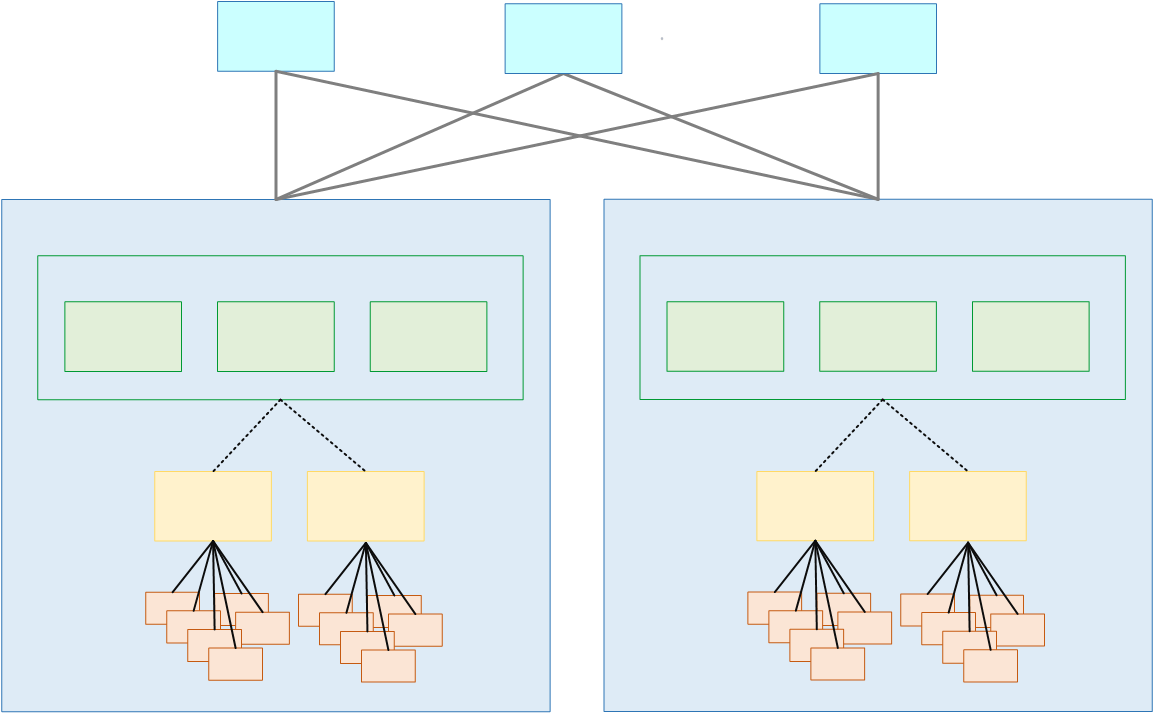
As illustrated in the diagram above, an AWS Elemental MediaLive Anywhere deployment includes:
- Networks (bright blue), representing the local environments where appliances are installed.
- Clusters (blue) group channel placement groups, nodes, and channels to streamline organization and resource allocation.
- Nodes (green) are the physical encoding appliances, typically provisioned to meet peak channel demand with additional units for resiliency.
- Channel placement groups (yellow) organize channels within a cluster, while channels (orange) are the individual MediaLive channels running on MediaLive Anywhere nodes.
Use Cases for AWS Elemental MediaLive Anywhere
While the feature comparison provided above highlights the architectural differences between MediaLive and MediaLive Anywhere, understanding when to choose one over the other depends heavily on the context of your live video workflows. MediaLive Anywhere is particularly well-suited for hybrid production environments where factors such as limited connectivity, local signal acquisition, or latency-sensitive delivery come into play. Below are several concrete use cases where MediaLive Anywhere offers clear operational and technical advantages over a fully cloud-based MediaLive deployment.
Use Case #1: Remote Broadcast Production with Limited Bandwidth
Example: A live sports event is being produced in a rural area or temporary venue (e.g., a marathon, cycling race, or mountaintop ski event) with limited or unreliable internet.
Why MediaLive Anywhere: Encoding occurs locally on-site, sending only the compressed, broadcast-ready stream to the cloud. This significantly reduces the required upstream bandwidth compared to transmitting raw video to MediaLive in the cloud.
Use Case #2: Studio or Control Room with Existing SDI Infrastructure
Example: A traditional broadcast studio or control room that already uses SDI (Serial Digital Interface) video routing systems.
Why MediaLive Anywhere: Local appliances can ingest SDI directly without needing to convert to IP for cloud upload. This reduces complexity and lets teams keep using existing infrastructure.
Use Case #3: Live Event Production with Ultra-Low Latency Needs
Example: A financial news outlet producing a real-time live stream of market reactions and trading commentary.
Why MediaLive Anywhere: Local encoding eliminates round-trip latency to the cloud for initial video processing, providing faster stream turnaround and lower latency (around 5 seconds).
Use Case #4: Pop-Up or Mobile Production Units
Example: A mobile news van or production trailer covering live events.
Why MediaLive Anywhere: Appliances inside the van can handle encoding on-site with minimal cloud reliance, perfect for mobile or pop-up workflows.
Hardware and Software Setup for MediaLive Anywhere
Hardware Setup
To establish a fully functional MediaLive Anywhere node, a dedicated physical server must be assembled according to AWS’s published hardware requirements. Specifications and compatibility details are outlined in the official AWS documentation, ensuring optimal performance and support for high-quality video encoding.
For this implementation, the Minis Forum MS-01 was selected as the host platform:
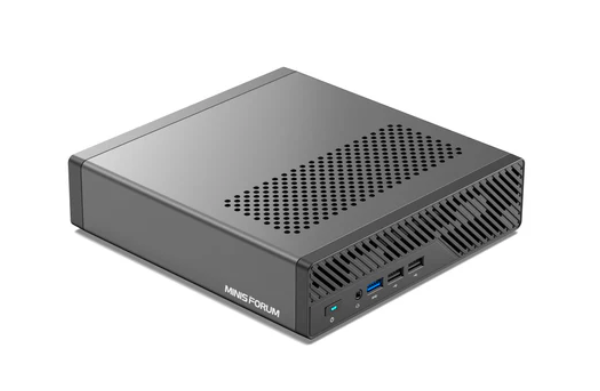
By design, the MS-01 lacks native support for SDI capture. As noted in the AWS MediaLive Anywhere compatibility matrix, only AJA PCI-Express cards are currently certified. Accordingly, an AJA Kona 1-S card—the sole option validated for use with the Minis Forum MS-01—was procured:
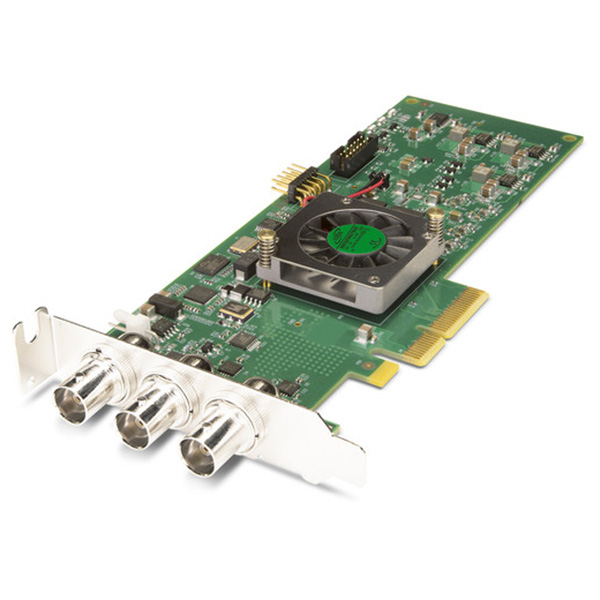
The Kona 1-S card was installed into the MS-01’s PCI-Express slot, resulting in the following hardware configuration:
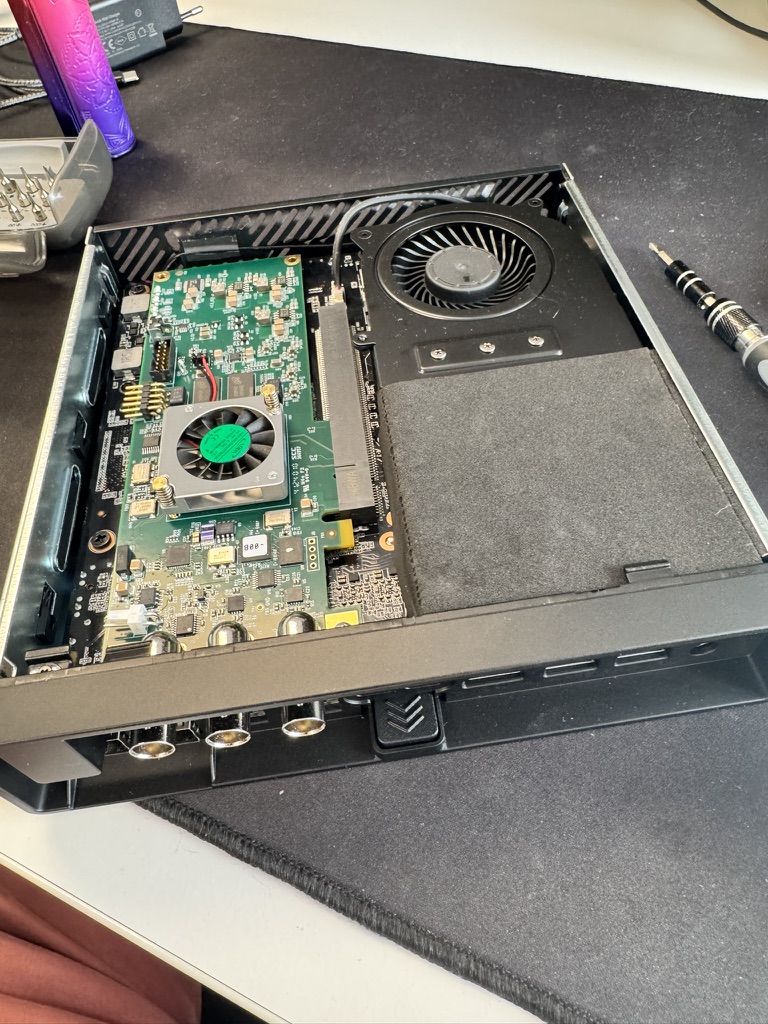
With the capture node assembled, an SDI-capable camera was acquired to provide video input:
An accompanying SDI cable was also obtained to complete the signal-chain setup:
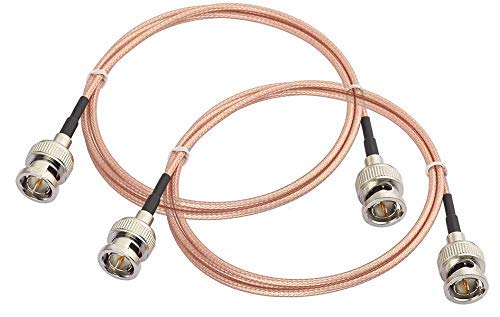
With these components in place, the system was ready for the installation of the MediaLive Anywhere software stack and end-to-end video ingestion validation, forming the basis for a scalable, cloud-connected live streaming workflow compliant with AWS guidelines.
Software Setup
An appropriate operating system must be installed on the newly assembled node. Rocky Linux 9.5 was selected due to its compatibility with the MediaLive Anywhere software stack. Although Red Hat Enterprise Linux (RHEL) 9.5 enjoys official support, its licensing requirements led to the choice of Rocky Linux as a cost-effective alternative.
To support the installation of AJA drivers, Secure Boot was disabled in the BIOS. After booting into Rocky Linux, essential development packages—kernel-headers and kernel-devel—were installed to meet driver build requirements. A system reboot completed the kernel module installation, enabling the node to host the MediaLive Anywhere components.
Internet connectivity was verified to allow integration with AWS services. In the AWS Management Console, the node was registered to a dedicated MediaLive Anywhere cluster. The AWS-provided setup script was executed on the node, automatically deploying all required packages and services.

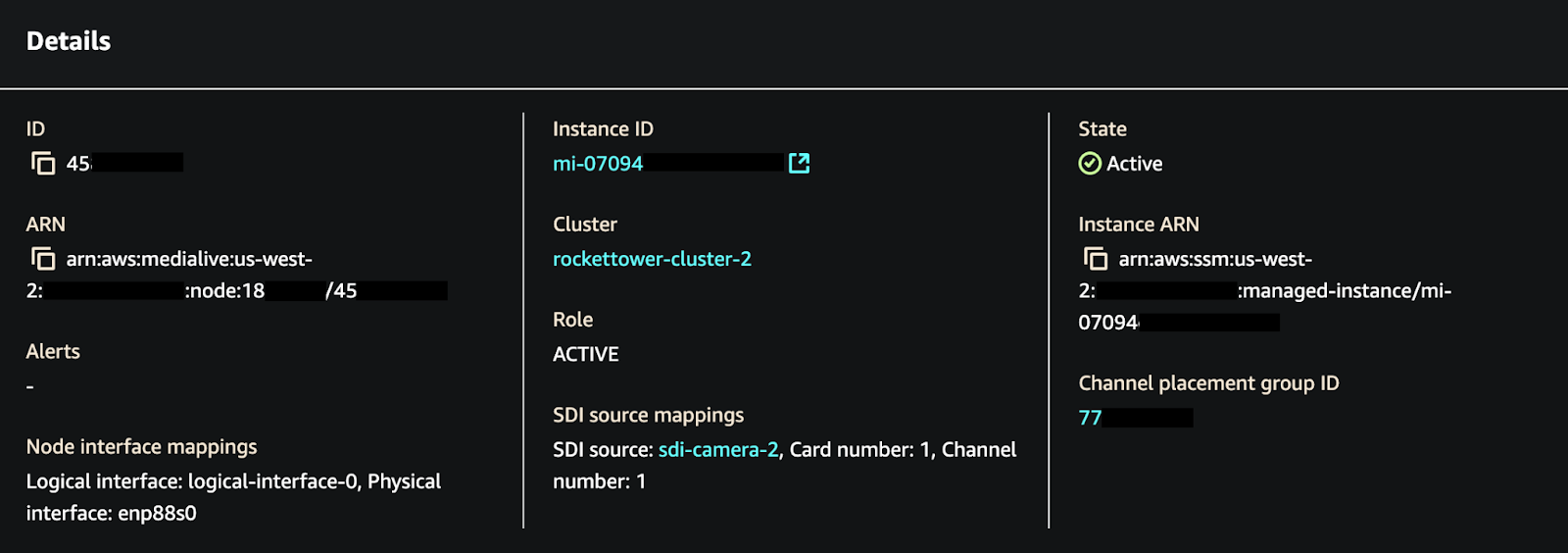
A MediaLive channel was then created, configured to ingest SDI input and deliver an RTMP output to YouTube. Once the channel was successfully initialized, a live stream from the TrackIt Strasbourg office was established and verified as operational.
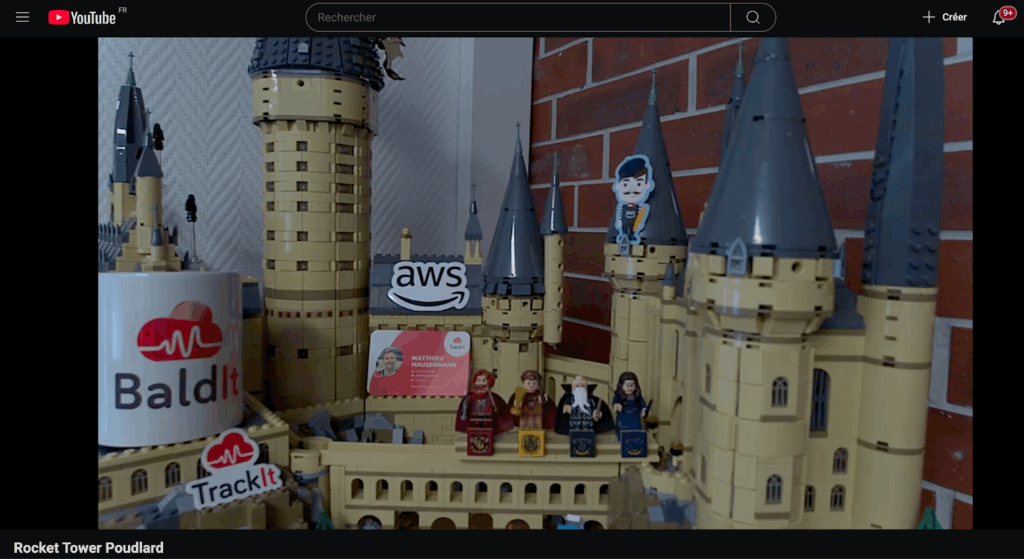
Conclusion & Next Steps
Deploying AWS Elemental MediaLive Anywhere requires careful planning across both hardware and software domains, from selecting compatible appliances and SDI capture cards to configuring operating systems, drivers, and AWS service integrations. When implemented correctly, this hybrid architecture enables broadcasters and content providers to optimize bandwidth usage, reduce latency, and maintain direct access to on-premises video sources while leveraging the scalability and flexibility of AWS Media Services.
TrackIt specializes in designing, deploying, and optimizing MediaLive Anywhere workflows. With expertise in broadcast infrastructure, cloud integration, and AWS Media Services, TrackIt can guide organizations through every stage of the process—from hardware selection and network configuration to channel setup and performance tuning—ensuring a seamless transition to a reliable, production-ready live streaming environment.
About TrackIt
TrackIt is an international AWS cloud consulting, systems integration, and software development firm headquartered in Marina del Rey, CA.
We have built our reputation on helping media companies architect and implement cost-effective, reliable, and scalable Media & Entertainment workflows in the cloud. These include streaming and on-demand video solutions, media asset management, and archiving, incorporating the latest AI technology to build bespoke media solutions tailored to customer requirements.
Cloud-native software development is at the foundation of what we do. We specialize in Application Modernization, Containerization, Infrastructure as Code and event-driven serverless architectures by leveraging the latest AWS services. Along with our Managed Services offerings which provide 24/7 cloud infrastructure maintenance and support, we are able to provide complete solutions for the media industry.

